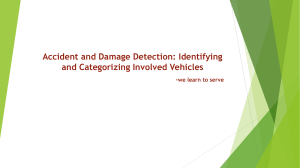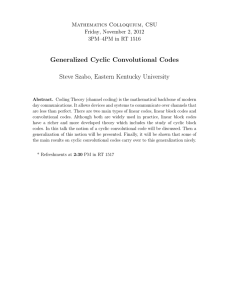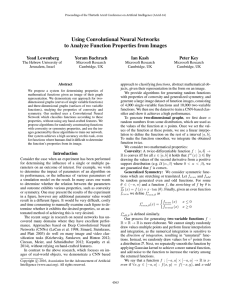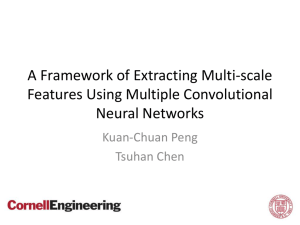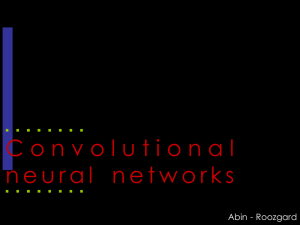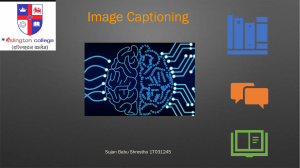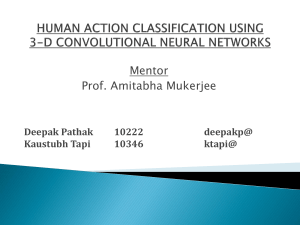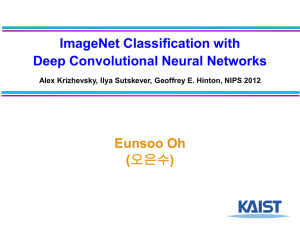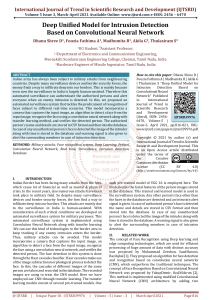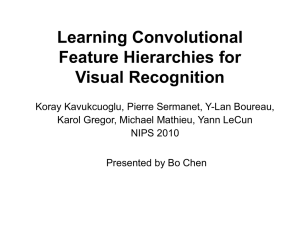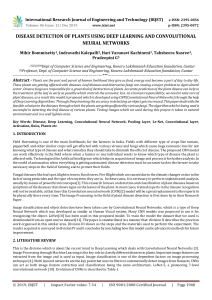Online presentation
advertisement
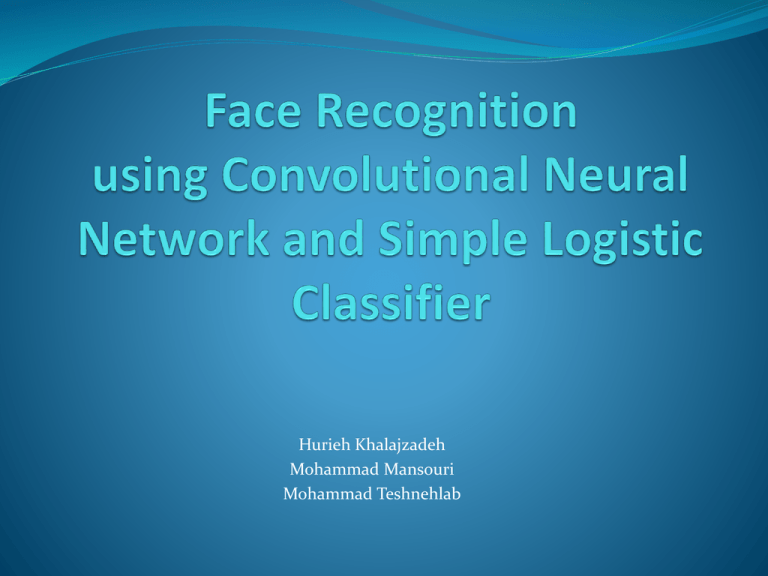
Hurieh Khalajzadeh Mohammad Mansouri Mohammad Teshnehlab Table of Contents Convolutional Neural Networks Proposed CNN structure for face recognition Logistic Classifier Result of CNN with winner takes all mechanism Comparison of using different algorithms for classifying Results of proposed method Conclusion Convolutional Neural Networks Introduced by Yann LeCun and Yoshua Bengio in 1995 Feed-forward networks with the ability of extracting topological properties from the input image Invariance to distortions and simple geometric transformations like translation, scaling, rotation and squeezing Alternate between convolution layers and subsampling layers LeNet5 Architecture CNN structure used for feature extraction Interconnection of first subsampling layer with the second convolutional layer Learning Rate 0.1 0.08 0.06 0.04 0.02 0 0 100 200 300 400 500 300 400 500 Epoch 0.1 0.08 0.06 0.04 0.02 0 0 100 200 Epoch Yale face database 64×64 [-1, 1] logistic function Y 1 0.5 Y = 1/(1 + exp(-X)) 0 -5 -4 -3 -2 -1 0 X 1 2 3 4 5 Recognition accuracy, training time and number of parameters 100 Accuracy(%) 80 60 40 Test Accuracy Train Accuracy 20 0 0 50 100 150 200 250 Epoch 300 350 400 450 500 Comparison of different algorithms X. Shu et al. / Pattern Recognition 45 (2012) 1892-1898 Classification accuracy Classification time Conclusion Convolutional neural networks and simple logistic regression method are investigated with results on Yale face dataset Method benefit from all CNN advantages such as feature extracting and robustness to distortions Simple logistic regression which is a discriminative classifier is more efficient when the normality assumptions are satisfied. Results show the highest classification accuracy and lowest classification time in compare with other machine learning algorithms
